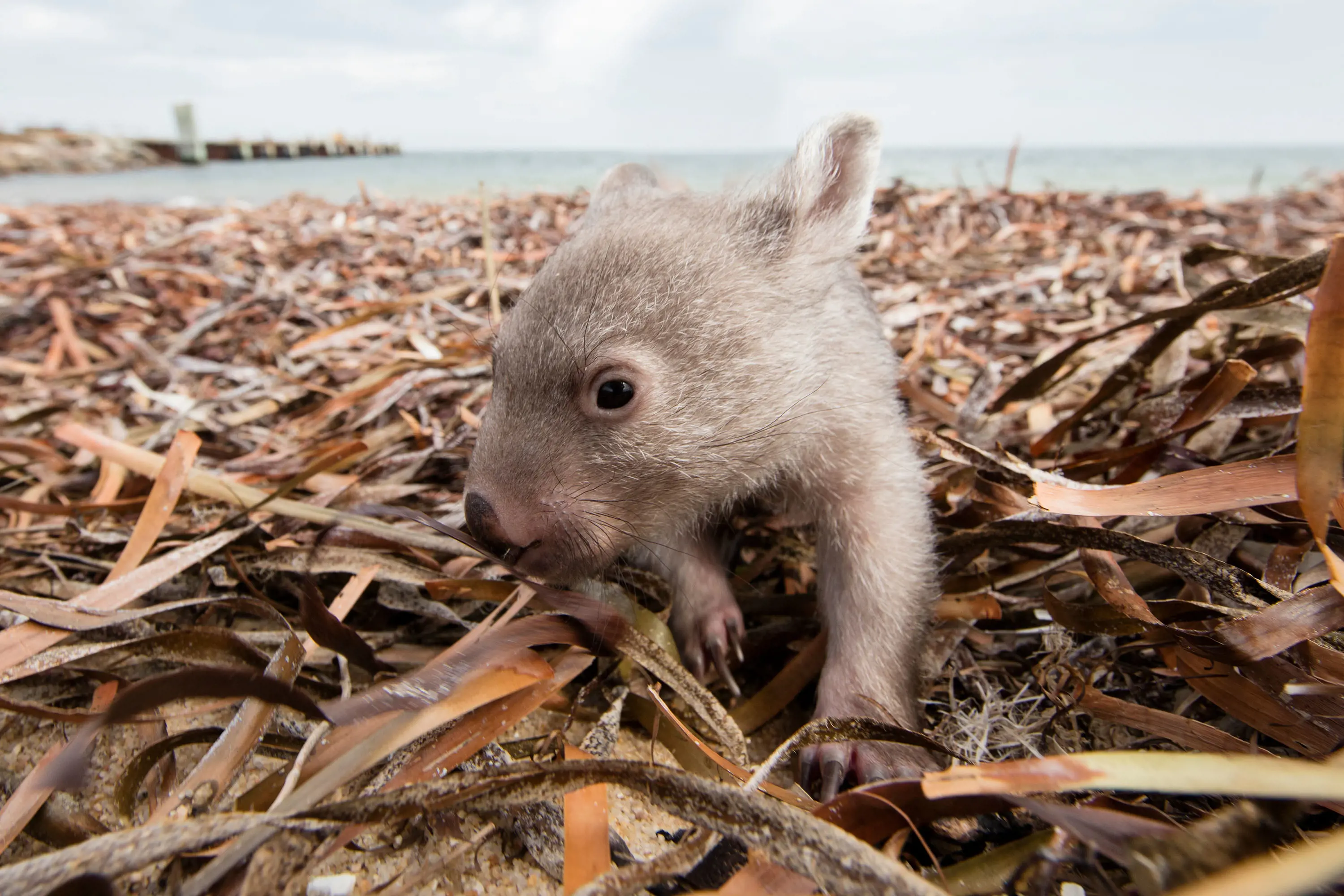
Baby wombat (Vombatus ursinus) on Flinders Island
Access your favourites here
You have a trip stored, would you like to save it?
These charismatic creatures have their eyes and ears close to the ground, so they know what's going down.
For tips straight from the wombat's mouth, here are Tasmania's top wombat hot-spots and what to do on their grassy home turf.
Life on Flinders Island moves at a leisurely pace. You won't find many cars on this remote isle off Tasmania's north-east coast but you will find empty beaches, grand mountains, whisky and... wombats (aka Vombatus ursinus).
The Flinders Island wombat subspecies is blonder than most. Spot them from the sky with Flinders Island Air Charters – you might see them, but they won't see you. (A wombat's eyesight isn't its strongest asset. Its rock-hard backside, however, is another story.)

Baby wombat (Vombatus ursinus) on Flinders Island
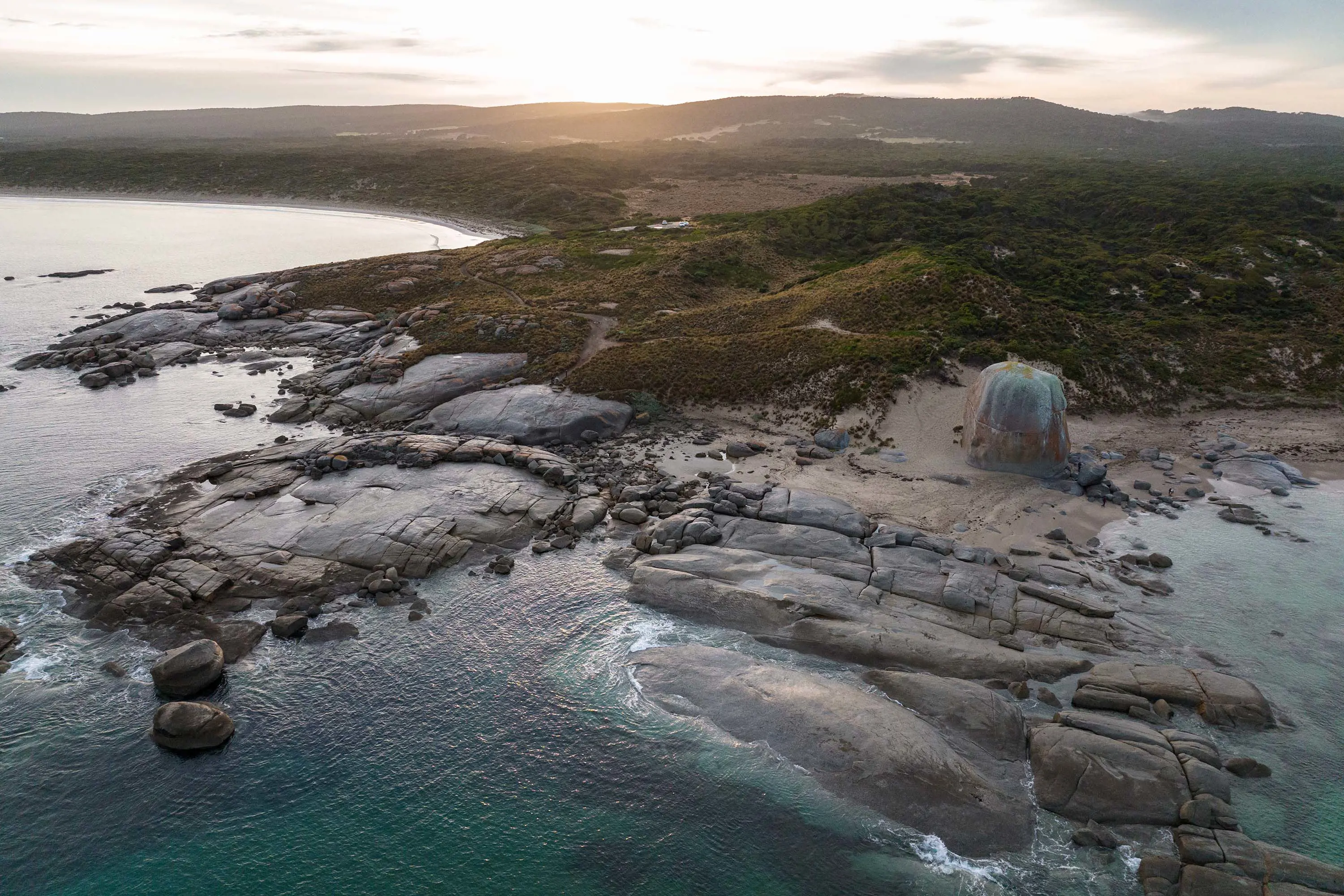
World Expeditions – Flinders Island Walking Adventure
Or take a spellbinding six-day hike traversing windswept pastures, peaks and clear-water bays with Flinders Island Walking Adventure. Covering all that ground, there's a good chance you'll spot some four-legged blondies.
When night falls, retreat at Wombat Lodge in Killiecrankie – a stylish farm stay with paddocks fit for a wild animal. If you, like the wombats, love raw, pure food grown naturally, head to the Flinders Wharf for some island-grown vegetables, honey, crayfish and meats. Dine in or raid the well-stocked larder and lay out a picnic on those grassy pastures.

Camping at Darlington

Camping at Darlington
Of all the wombat hot-spots, Maria Island National Park on Tasmania's east coast is perhaps the most densely populated haven for these furry loaves with legs.
At dusk, Darlington Campground feels as much like a campground for humans as it does a playground for wombats. Pitch your tent on an empty patch and enjoy the show. If you're day tripping to Maria Island, stay the night near the ferry terminal at Triabunna Barracks, a heritage-chic bed and breakfast. Or, if you're committed to the theme, camp at Wombat Valley in Kellevie – a 40min drive from Triabunna.
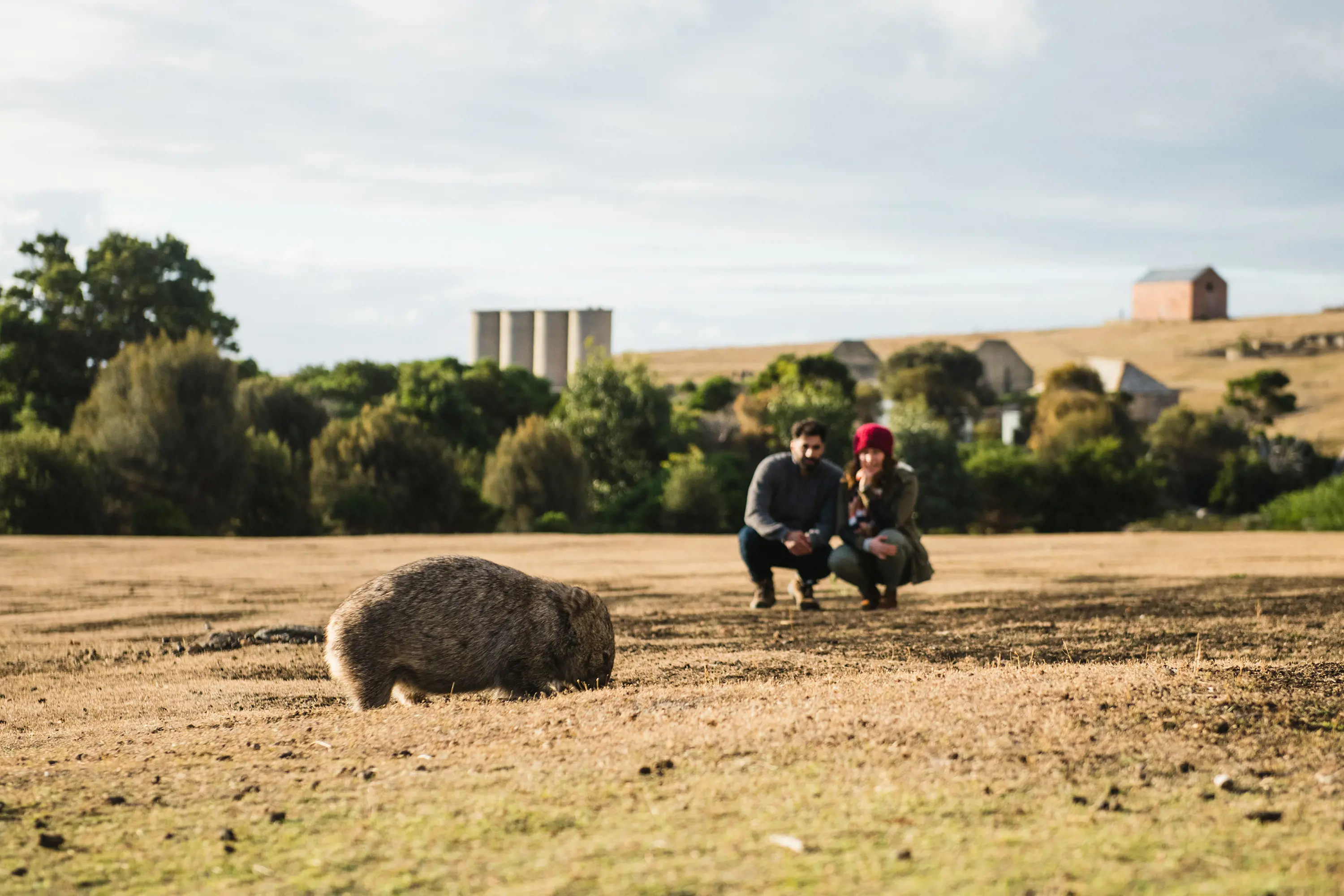
Wombat, Maria Island
Spot plenty more unique animals on Maria Island Cruise's day tour – from the striking silvery Cape Barren goose to the burly Forester kangaroo. Or e-bike to breathtaking coastal corners with Maria Island Adventures.
The island's grassy slopes are like an all-you-can-eat buffet for wombats. If you're not into eating dirt, board the Encounter Maria ferry back to laidback Triabunna and savour a warm meal at Spring Bay Hotel. Nip a further 10min down the coast to sunny Orford for breakfast at Wattlebanks Coastal Cafe and Providore or a fresh local lunch at Spring Bay Seafood and Wine Bar.
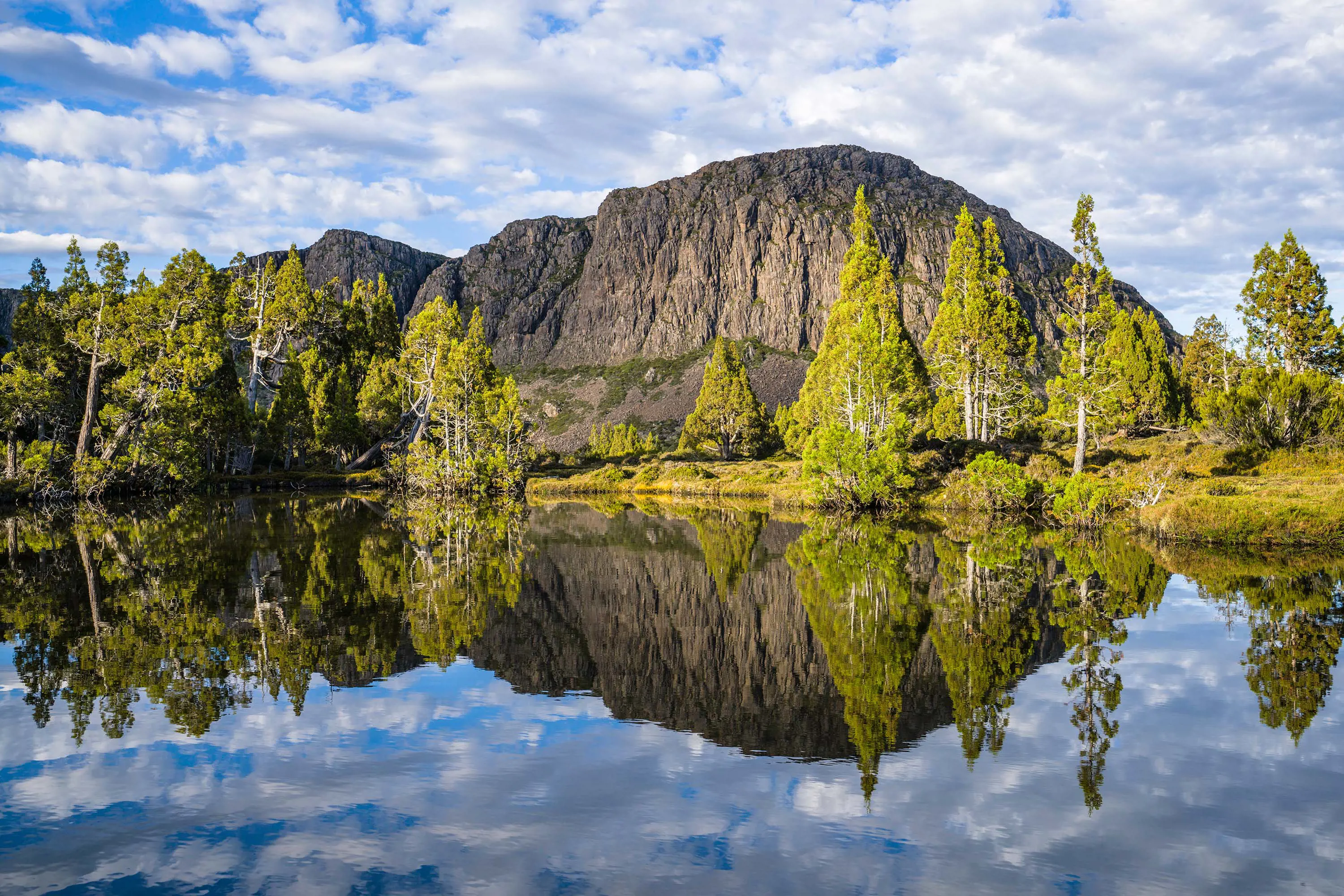
Pool of Siloam, Walls of Jerusalem National Park
Alpine and ancient, Walls of Jerusalem can only be accessed on foot. Please only visit this national park if you, like the local wombats, are an experienced and self-sufficient walker.
In the summer months, spot abundant wildlife, primeval glacial rock formations, mirror-like tarns and curious conifer forests on a five-day guided walk with Tasmanian Hikes. Or wander through this rugged dolerite landscape at your own pace; set off from the car park to explore Wild Dog Creek Campsite, tranquil Damascus Gate and the arresting Mount Jerusalem summit. The wombats seem to love the peace and quiet here, and so will you.
While you're in the highlands, find places to eat and stay in the towns of Miena and Mole Creek. In Miena, hide from the elements in style at Thousand Lakes Lodge and grab a feed with the friendly folks at Great Lake Hotel overlooking Yingina / Great Lake. Or at Mole Creek, stay overnight and enjoy the chef's menu at the charming Wandering Trout Taphouse.
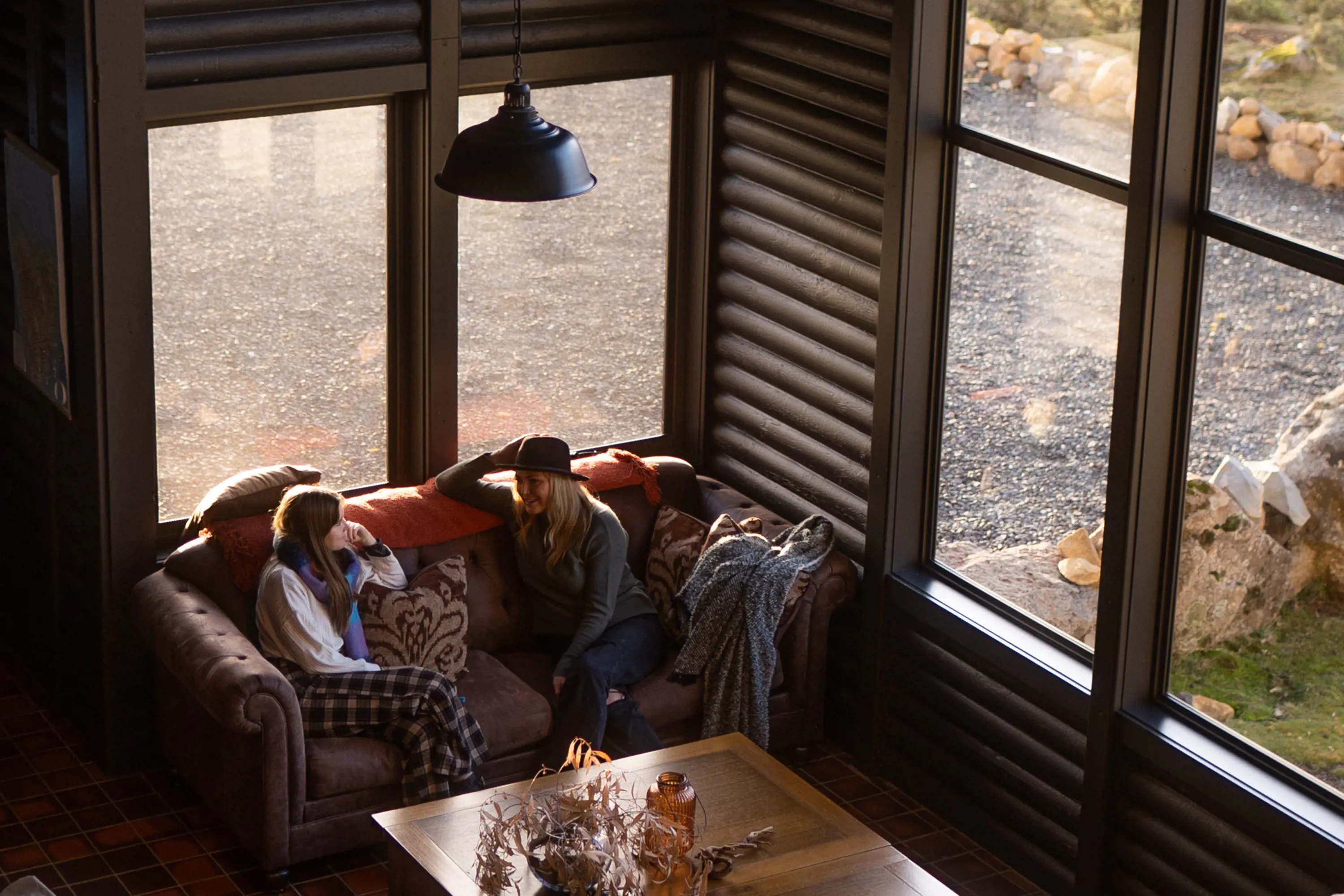
The untarnished beauty of Tasmania’s wild places relies on visitors respecting the environment.
Leave wild animals and natural objects as you find them, stay on the designated walking trails to protect the local flora and take your rubbish with you when you leave.
Find more tips on how to walk safely and responsibly.
These weather-hardy wombats enjoy roughly 16 hours of sleep per day and a lush diet of tussocky buttongrass beneath the captivating backdrop of Cradle Mountain. What a life.
The Crater Lake short walk takes you on a scenic 2hr loop past atmospheric tarns like Lake Lilla and Wombat Pool. Enjoy acquainting yourself with the wombats' wondrous waddling-ground but be warned: the views may distract you on your creature-spotting quest.
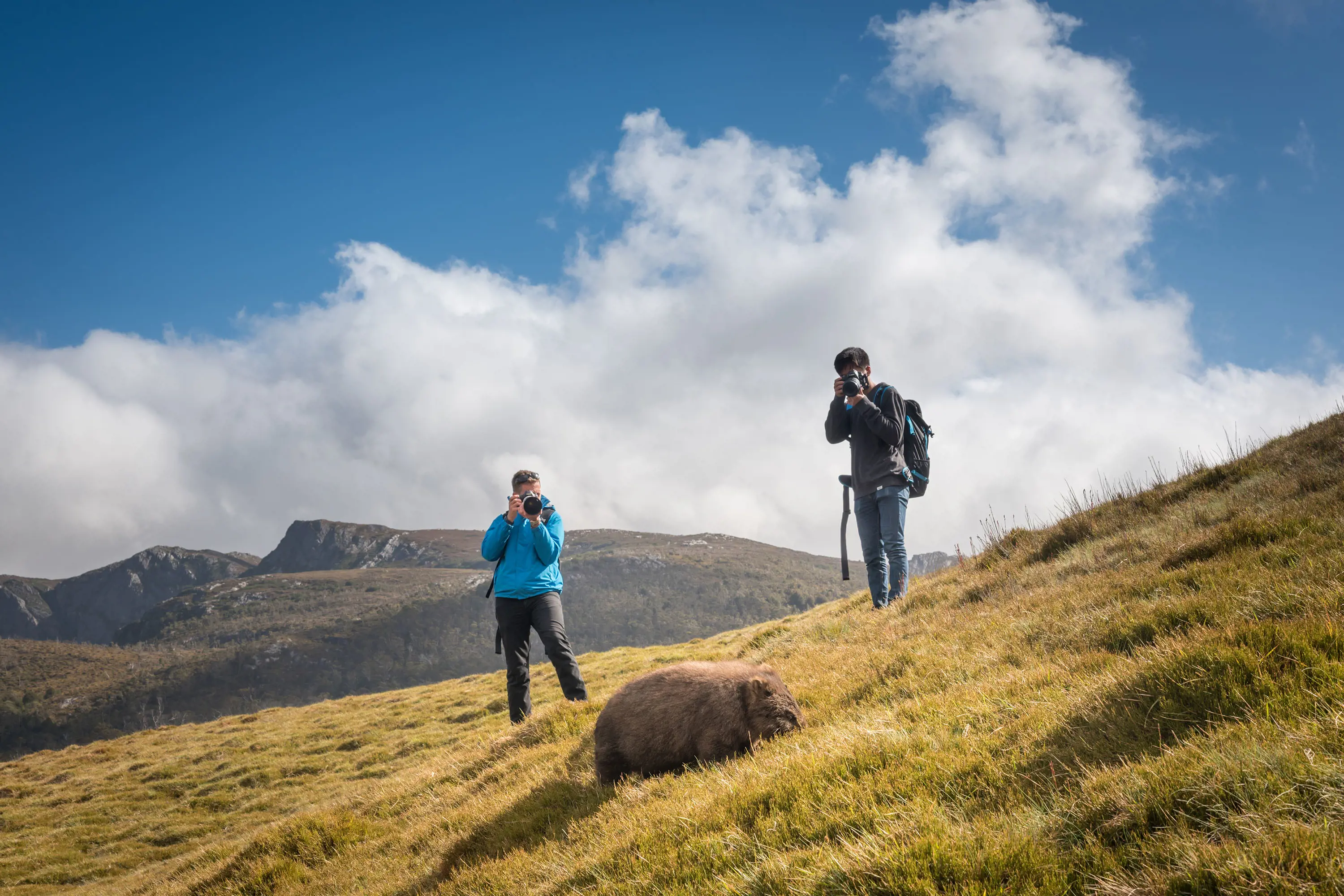
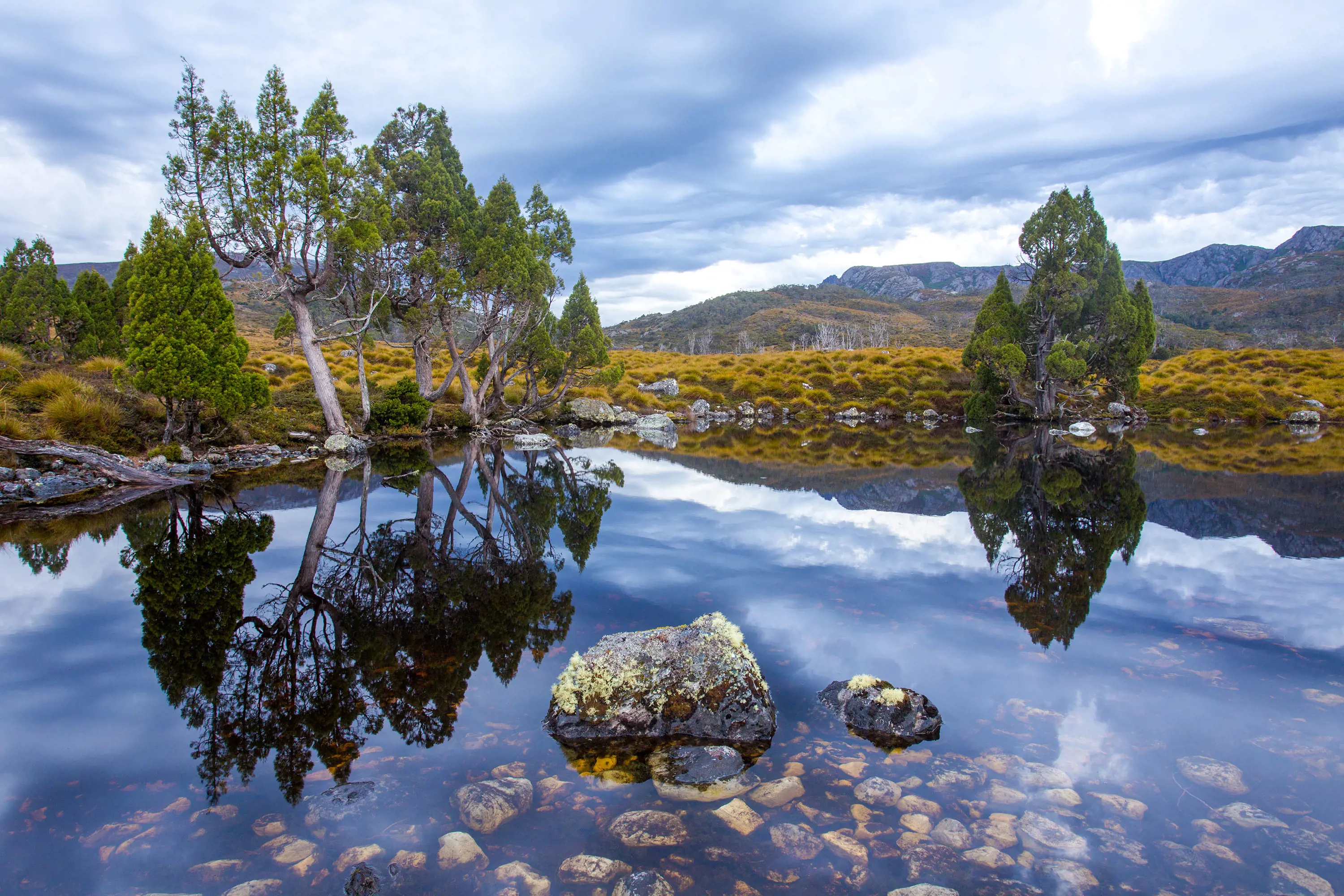
Also within Cradle Mountain-Lake St Clair National Park, the 20min Enchanted Walk is an easy stroll through mossy forest among pademelons and wombats. Kids will love the tunnel mimicking a wombat burrow.
Rejuvenate with a relaxing stay wrapped in alpine bushland at Cradle Mountain Wilderness Village. From your private balcony, keep an eye out for wallabies, currawongs, possums and – you guessed it – wombats. Hearty hiker fare awaits at Cradle Mountain Lodge's laidback Tavern Bar and Bistro.
For a tougher challenge (and a higher wombat count) take on the famous six-day Overland Track and drink up the majesty of the national park.
Of course, you’ll need to keep a safe distance from the wombats and other wild animals, so they can continue to be just that: wild. You’ll also need a parks pass to go where the wild wombats roam.
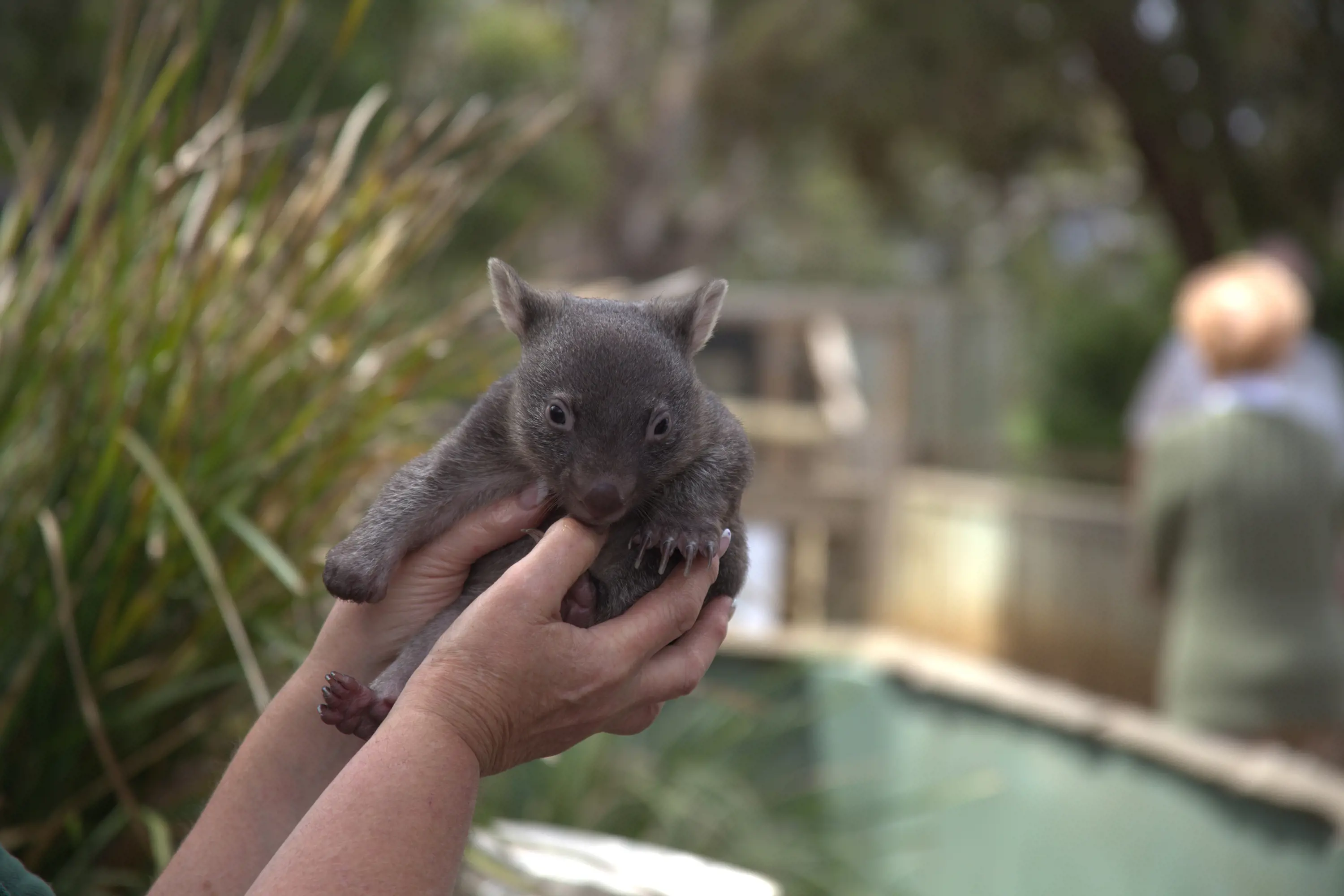
Wombat, Bonorong Wildlife Sanctuary
If a guaranteed sighting is what you seek, support local conservation initiatives and swap the Tassie wilderness for a wildlife sanctuary.
There's Bonorong Wildlife Sanctuary in the south, Trowunna Wildlife Sanctuary up north, Wings Wildlife Park on the north-west coast and East Coast Natureworld on – unsurprisingly – the east coast. There's also Pepper Bush Adventures for a north-east Tasmania tour filled with endearing animal encounters.
With their curious disposition and chilled-out nature, you might learn a thing or two from Tasmania's lovable wombats.